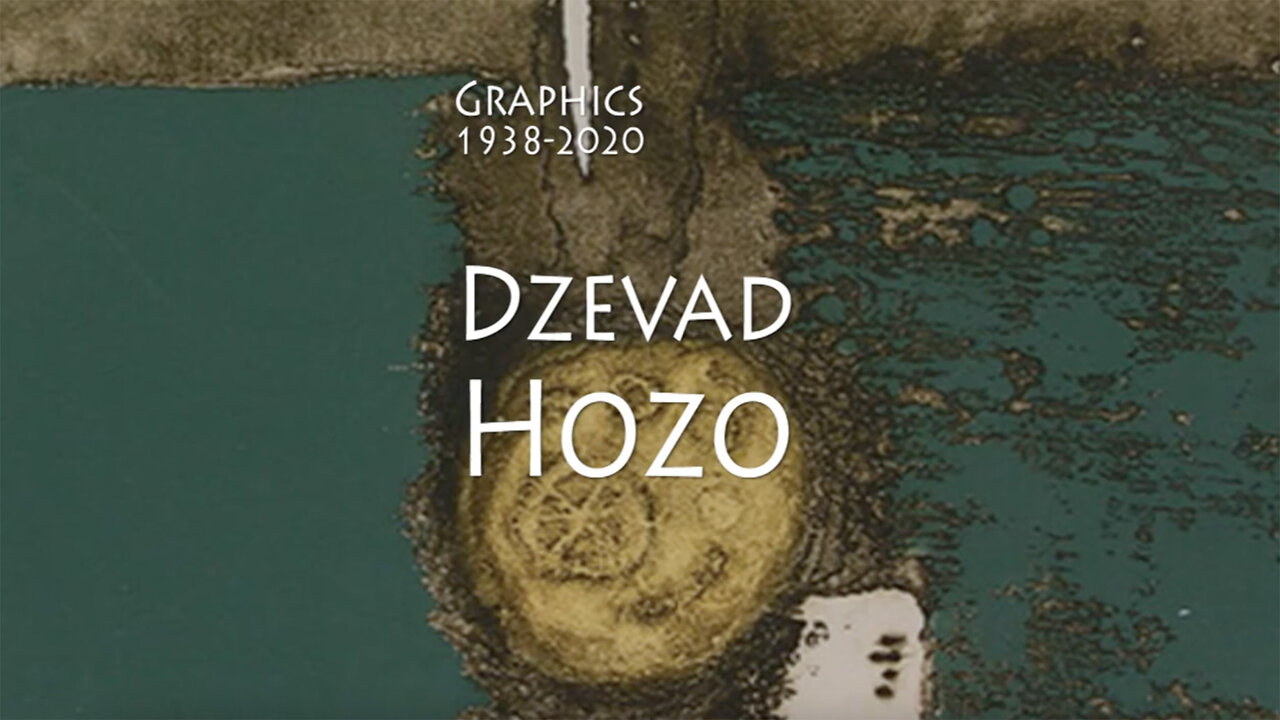Premium Only Content

Dzevad Hozo - Graphics (1938 - 2020)
Dževad Hozo (May 10, 1938, Užice – December 20, 2020, Sarajevo) was a graphic artist from Bosnia and Herzegovina. He finished high school in Bihać and in the same year enrolled in History of Art at the Faculty of Philosophy in Belgrade. He stopped his studies in 1958 and enrolled at the Academy of Fine Arts in Ljubljana. After graduating in 1963, he enrolled in the graphic arts specialization with professor Rika Debenjak.
In 1966, he received the status of a freelance artist until 1973, when he became an assistant professor of graphics at the newly opened Academy of Fine Arts in Sarajevo, as head of the Department of Graphics. He worked on shaping the program of the Collegium Artisticum and wrote a manuscript on manual graphic techniques, which he later (in 1988) published under the title The Art of Multi-Originals. In 1981, he became a member of the Academy of Sciences and Arts of Bosnia and Herzegovina.
Hozo finds inspiration and preoccupation in the past - in the material heritage and in the texts of Bosnian-Herzegovinian writers who tell stories about that time (Mak Dizdar, Ivo Andrić).
He exhibited independently more than forty times, and participated in numerous national and international exhibitions as a group. He is the winner of numerous awards for graphics at prestigious exhibitions in the country and abroad.
He died on December 20, 2020 in Sarajevo.
In 2009, the Commission for the Preservation of National Monuments made a decision to declare the collection of artworks by Dževad Hoza in the Una-Sana Canton Museum in Bihać a national monument of Bosnia and Herzegovina. The National Monument consists of 30 graphics. Part of the graphic was donated by the author, and part was bought from the author for the newly formed collection of the Museum of AVNOJ and Pounj. The graphics from the cycle "Nišani" belong to the early phase of his creative work, and were created during his studio stay in Ljubljana. The author's childhood, in Bihać, in the house that was located next to the cemetery, had a strong influence on the formation of this collection. Nišani, a constant source of inspiration, translated into graphic and artistic expression illuminates the peculiarity of their world, a symbol of life and death.
In addition to the direct content of Hoza's letters, we must admit that the history of one of the forms of the Bosnian cemetery, i.e. Muslim, characterized by stone colored monuments, the so-called sights – it's not as close as it could be. First of all, and in this connection, we should warn about one moment, which Hozo emphasizes in his work and which leads him to further research, modernizing the ancient messages of four centuries old. A Muslim cemetery, unlike a Christian one, is always part of the image of a region; it is not a place of mourning that would be marked by the whiteness or blackness of marble slabs and monuments. The sights were once painted, although the traces of those colors have already been erased; with their anthropomorphic forms and forms similar to them, real objects represented the bearers of a new life. The artist's task is to resolve their messages, that is, to convey the truth of a certain time into modern times.
-
 LIVE
LIVE
Major League Fishing
5 days agoLIVE! - Fishing Clash Team Series: Challenge Cup - Day 4
280 watching -
 DVR
DVR
Neil McCoy-Ward
1 hour agoFURY As JD Vance Unleashes HELL On The UK & EU… (What We Know So Far)
3.48K2 -
 LIVE
LIVE
IrishBreakdown
1 hour agoNotre Dame vs Miami Preview - Inside the Matchup
9 watching -
 LIVE
LIVE
Rebel News
1 hour agoPoilievre targets Carney on Cdn energy, Smith's AB Next, Ford's crime rant | Buffalo Roundtable
245 watching -
 LIVE
LIVE
The Charlie Kirk Show
1 hour agoHow Trump Governs + Breaking the Barrel + Youth for Christ | Starbuck, Marlow, Knowles | 8.27.2025
3,763 watching -
 LIVE
LIVE
Side Scrollers Podcast
2 hours agoCracker Barrel CANCELS Rebrand + OG YouTuber Has Brain Tumor + More | Side Scrollers IN STUDIO
323 watching -

The Mel K Show
2 hours agoMORNINGS WITH MEL K - Reexamining the US relationship with International Banks, Treaties, and NGOs 8-27-25
18.6K10 -
 LIVE
LIVE
The Shannon Joy Show
4 hours ago🔥🔥SAVE Baby Kit! Hospital Injects 2 Pound Baby With Hep B Vaccine Without Mom’s Consent, Injures Him Severely Then Calls CPS On The Family!🔥🔥
177 watching -
 LIVE
LIVE
Viss
2 hours ago🔴LIVE - Improve Your Battle Royale Play with Tactics & Strategy! - PUBG
119 watching -
 43:26
43:26
Grant Stinchfield
4 hours agoBallot Harvesting Scams EXPOSED: Dead Voters, Fake Signatures, Real Crimes
18.7K2